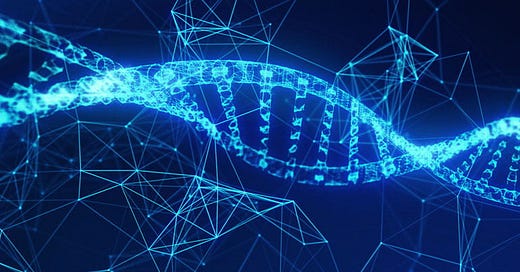The field of digital evolution, inspired by biological evolution, investigates evolutionary processes in digital substrates. Researchers in this field operate under the premise that abstract principles of biological evolution are not bound to any physical medium and can be effectively implemented and examined within computational systems. Evolution can occur in any context where the conditions of replication, variation (mutation), and differential fitness (competition) are met, without relying on specific molecules like DNA or RNA or particular physical embodiments [2].
What is Evolutionary Computation?
Evolutionary computation is a computational intelligence model that emulates the principles of biological evolution. Presently, Evolutionary computation encompasses four primary algorithms: genetic algorithms, evolutionary programming, evolution strategies, and genetic programming [1]. This innovative approach has led to significant advancements in the field, enabling the development of evolutionary algorithms that mimic natural evolutionary processes within digital environments [2].
The Family of Evolutionary Algorithms
Genetic Algorithms are a variant of evolutionary algorithms that originally focused on string representations, analogous to the biological DNA alphabet. GAs operate by creating a population of potential solutions and using genetic operators like selection, crossover, and mutation to evolve solutions over generations towards an optimal or satisfactory outcome.
Genetic Programming is a collection of evolutionary algorithm techniques specifically designed for the automatic generation of computer programs to perform user-defined tasks.
Evolutionary Programming focuses on evolving the parameters of fixed program structures. The approach involves generating offspring by mutating individuals in the current population and then selecting the next generation from the combined pool of offspring and parent populations.
Evolution Strategies, particularly the (1+1)-ES or two-membered evolution strategy, operate by applying small, random changes to all variables of a single parent to generate an offspring. If the offspring solution is superior, it replaces the parent; otherwise, the parent is retained [3].
These four algorithms form the core of evolutionary computation, each with unique mechanisms and applications, yet all fundamentally inspired by the processes of natural evolution.
Advances in Algorithm Design
Evolutionary computation has seen significant advancements, leading to enhanced efficiency, versatility, and applicability in solving complex optimization problems. This section highlights the key innovations in algorithm design.
Hybrid Algorithms: These combine strengths of different optimization techniques, such as genetic algorithms with particle swarm optimization or differential evolution, to improve convergence rates and solution quality.
Adaptive and Self-Adaptive Algorithms: These algorithms dynamically adjust their parameters during the optimization process, enhancing the ability to escape local optima and converge to global solutions in dynamic and uncertain environments [4].
Protein Structure Prediction
Advancements in evolutionary computation have significantly improved protein structure prediction, particularly through genetic algorithms. The following algorithm optimizes these parameters:
Generate n chromosomes for the initial population.
Encode structures using TINKER.
Calculate energy values with Discovery Studio.
Select and save the elite (minimal energy value).
Initialize crossover and mutation rates.
Create a new population.
By systematically adjusting crossover and mutation rates, the algorithm balances the search process, preventing premature convergence and improving performance. This approach effectively utilizes GAs to explore the solution space, leading to more accurate protein structure predictions [5].
Impacts of Evolutionary Computation Across Biological Fields
The future of evolutionary computation is promising, with continued integration with machine learning and artificial intelligence enhancing the adaptability and intelligence of Evolutionary Computation techniques. Ongoing research and innovation will allow Evolutionary Computation to address increasingly complex challenges across diverse domains, driving scientific and technological advancements.
—————————————-—————————————————————————
Michelle is a 12th grader from Illinois specializing in bioinformatics and computational biology.
Sources:
“Evolutionary Computation.” Science Direct
“The Surprising Creativity of Digital Evolution: A Collection of Anecdotes from the Evolutionary Computation and Artificial Life Research Communities.” MIT Press Direct
https://direct.mit.edu/artl/article/26/2/274/93255/The-Surprising-Creativity-of-Digital-Evolution-A
“Evolutionary Algorithms.” Wiley Interdisciplinary Reviews
“Advances in Evolutionary Computing: Theory and Applications.” Research Gate
“Computational Approach for Protein Structure Prediction.” National Library of Medicine




